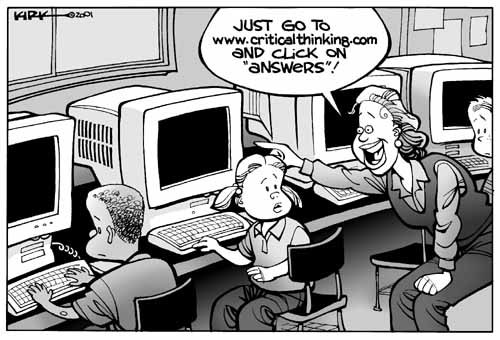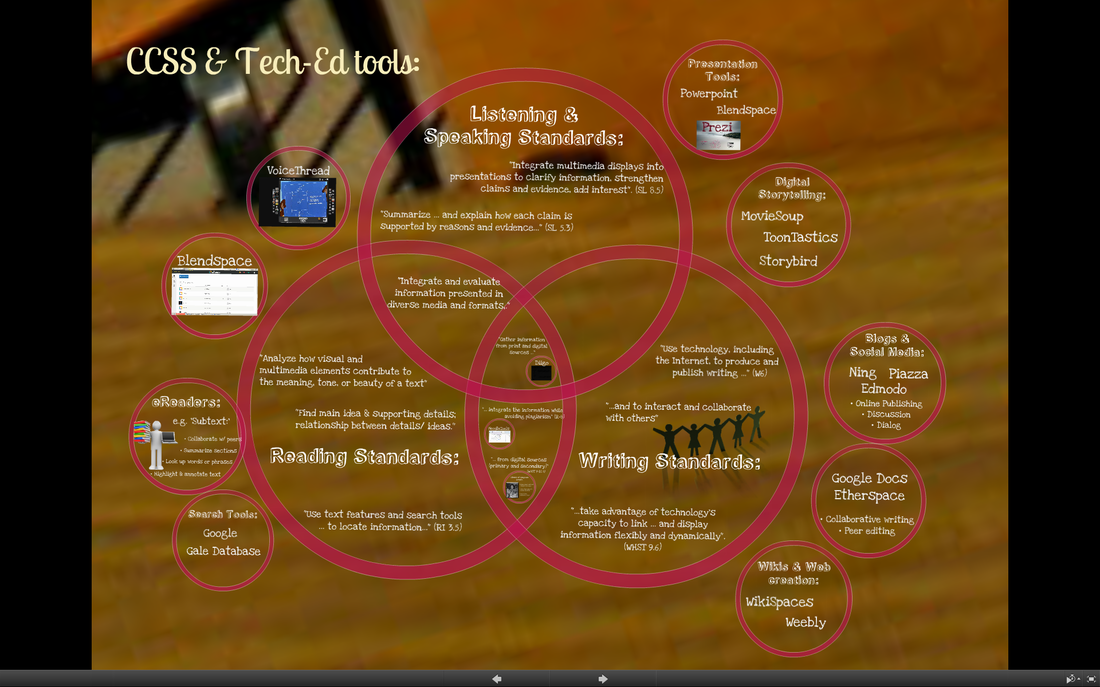Educational Technology - Don't Loose the Learning Goals in the Hype01/15/2014
As today's students graduate, they will increasingly need to interact with current and emerging technologies. As teachers, it is our job to be sure they are as prepared as possible. Although weak in some aspects, the Common Core standards does call for a significant integration of technology in the learning process. The CCSS introduction offers this portrayal of students who are ‘college and careers ready’ in relation to technology:
A few of the standards
specific to technology address basic computer skills but most of them ask for
the integration of technology into the learning process to support development
of critical thinking and literacy skills in Math, Language Arts and History/Social
Studies. There are ninety six individual
standards that specifically reference the use of digital technologies, and
more that are indirectly related.
Clarify Learning Goals:
Select Apps to Support Learning:
Go Slowly:
Training and Support are Essential:
|


